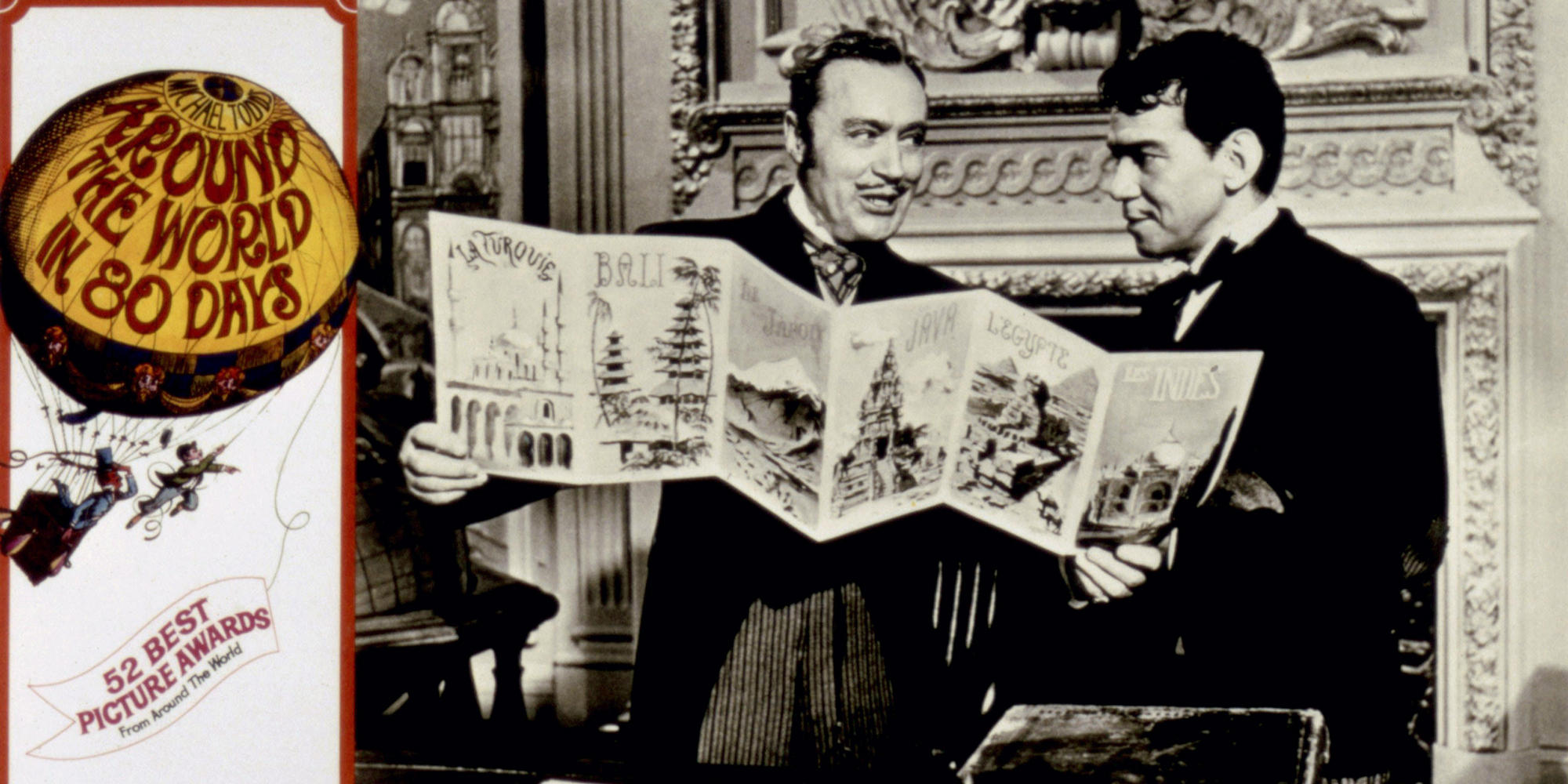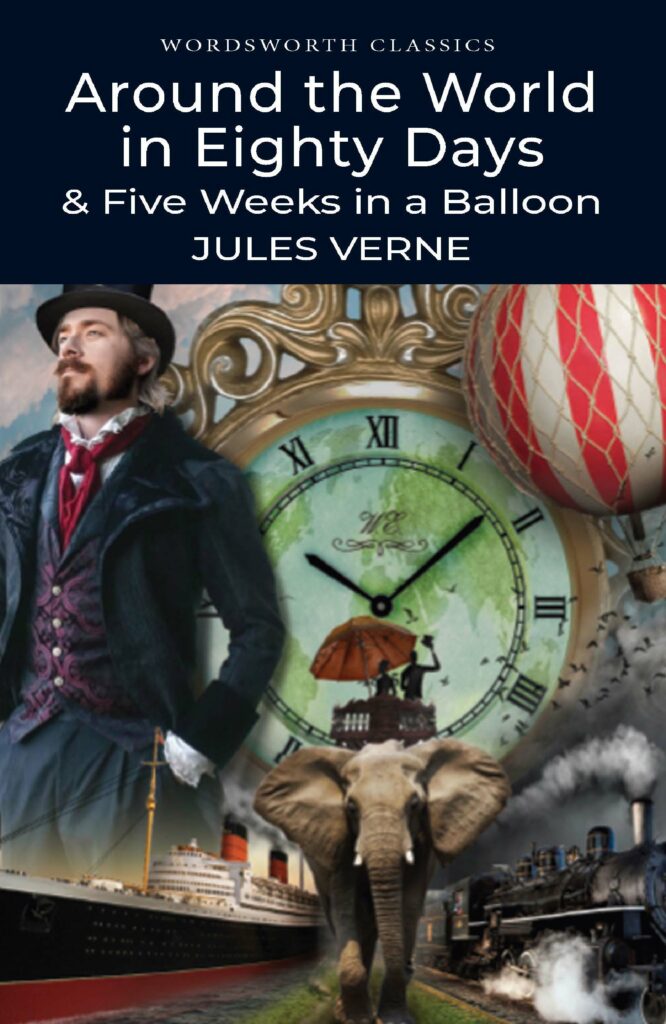
David Stuart Davies looks at Around the World in Eighty Days
David Stuart Davies looks at Jules Verne’s classic adventure, and the many TV, stage and film adaptions of it.
One piece of advice given to budding authors is to write about what you know. However this wasn’t a path trodden by Jules Verne whose works of fiction explode with wild dreamlike imaginative ideas that take the reader away from reality into an exciting fantasy universe. He wrote about space travel, journeying down into the depths of the earth and exploring the deep oceans of the world. No wonder that these novels, written in the mid-nineteenth century, are still in print and are still read avidly by those who desire adventures out of the ordinary.
Verne, born in Nantes, France in 1828, was a prolific writer all his life. At first he wrote many works for the stage encouraged by his friend, Alexandre Dumas. After making the acquaintance of editor and publisher Jules Hetzel, who would become Verne’s champion, the author’s literary career truly began, with the 1863 publication of Five Weeks in a Balloon (serialized in Hetzel’s Magazine d’Éducation et de Récréation, as most of his works were). The book garnered wide acclaim, and Verne knew that he had finally found his place in the world. He then immersed himself in his work with unbridled enthusiasm and, over the course of the next ten years, he would create many of his classic novels such as Twenty Thousand Leagues Under the Sea, From the Earth to the Moon and Journey to the Centre of the Earth.
One of his most popular works was Around the World in Eighty Days (1873). Writing in 1936, Jean Cocteau, the eminent French writer and film maker, said of the novel: ‘Jules Verne’s masterpiece … stimulated our childhood and taught us more than all the atlases: the taste of adventure and the love of travel’.
Around the World in Eighty Days was written at a time when the fascination with international travel was growing and the technological innovations of the 19th century had opened the possibility of rapid circumnavigation. In particular three technological breakthroughs occurred in 1869-70 that made a tourist-like around-the-world journey possible for the first time: the completion of the First Transcontinental Railroad in America (1869), the linking of the Indian railways across the sub-continent (1870), and the opening of the Suez Canal (1869).
In the introduction to the original publication, Verne wrote of how the idea for this novel came to him: ‘One day in a Paris café, I read in the Siècle that a man could travel around the world in 80 days, it immediately struck me that I could profit by a difference of meridian and make my traveller gain or lose a day in his journey. There was a dénouement ready found. The story was not written until long after. I carry ideas about in my head for years – ten, or fifteen years, sometimes – before giving them form’
The story concerns Englishman Phileas Fogg who attempts to circumnavigate the world in 80 days on a £20,000 wager (roughly £1.6 million today) set by his friends at the Reform Club in London. Breaking the well-establised routine of his daily life, the reserved Englishman immediately sets off for Dover, accompanied by his hot-blooded French manservant Passepartout. Travelling by train, steamship, sailing boat, sledge and even elephant, they must overcome storms, kidnappings, natural disasters, Sioux attacks and the dogged Inspector Fix of Scotland Yard – who believes that Fogg has robbed the Bank of England – in order to win the extraordinary wager. The novel charts their adventures and like a rich literary travelogue presents the readers with an exciting panorama of the world’s most fascinating locations. Some of Fogg’s exploits are amusing, some fantastic and some exciting, all contributing to a rollicking good read. Despite overcoming many obstacles, as Fogg nears his goal it seems that he will fail in completing the journey in its allotted time but Verne has one clever surprise to reveal at the end of the story which adds an extra twist to this grand tale.
The book was an immediate best seller and following the English translation, many people tried to follow in the footsteps of Fogg’s fictional circumnavigation. Although a journey by balloon has become one of the images most strongly associated with the story, this iconic symbol was never deployed by Verne – the idea is briefly brought up in chapter 32, but dismissed, as it ‘would have been highly risky and, in any case, impossible.’ This plot element is reminiscent of Verne’s earlier Five Weeks in a Balloon. However the popular 1956 movie adaptation, featuring David Niven as Fogg, reinstated floated the balloon scenario and it has now become a part of the mythology of the story, even appearing on book covers.
The novel has been filmed several times. The earliest version was made in Germany in 1919 starring Conrad Veidt. The most famous screen adaptation was the spectacular 1956 movie which featured a whole raft of famous stars in brief cameo roles as Fogg landed in various locations ranging from India, Hong Kong, Spain to the Wild West The movie was shot in the then new wide screen process known as Todd-AO 70 mm and won five Academy Awards, including Best Picture.
Hollywood returned to the novel in 2004 with Steve Coogan as Fogg and Jackie Chan as his manservant. In this version, which takes quite a few liberties with the original narrative, Passepartout is a Chinese thief whose skill in the martial arts saves his master from a number of tricky situations.
There have been several musical versions of the novel. In 1946 Orson Welles produced and starred in Around the World, with music and lyrics by Cole Porter. In 1988 there appeared 80 Days, with songs by Ray Davies of The Kinks.
2015 saw the latest theatrical manifestation of Verne’s geographical extravaganza in a lively Christmas entertainment at St James Theatre in London. The adaptation by Laura Eason involved a cast of eight who played over 50 characters in a high-spirited escapade featuring six trains, five boats, four fights, three dances, two circus acts and an elephant!Finally, Christmas 2021 sees David Tennant in a new BBC version, bringing this classic tale to a new generation of viewers.
The spirit of Jules Verne’s great book continues to fascinate and entertain.
David Stuart Davies Image: Charles Boyer and Cantinflas in the1956 film version Credit: Everett Collection Inc / Alamy Stock Photo
Books associated with this article
